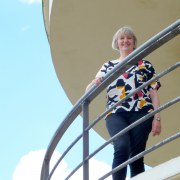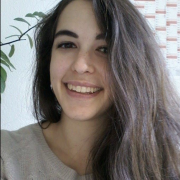Scientific themes can be challenging to communicate and at the same time imperative for science centres and related institutions to help visitors understand. Art is a meaningful, engaging and accessible way of communicating complex ideas and concepts. The panel will discuss the process of commissioning, collaborating and working with artists to develop ideas and exhibits.
Experiences will be shared from CERN, Cabaret Mechanical Theatre, and a natural history museum in regards to how art and artists can be part of the communication strategy.
Facilitator
Associate Director Exhibit Content Development
San Francisco
United States
Session speakers
Director
Cabaret Mechanical Theatre
London
United Kingdom
Director CMT
Sharing collaborations & developing touring exhibitions with Bio-economy commission as case study. Cabaret Mechanical Theatre co-commissioned a series of 16 automata with the Narwareum, a museum focused on renewable raw resources in Germany with a permanent exhibition opening June 2021 to coincide with the ECSITE conference.
Exhibition Curator
CERN, the European Laboratory for Particle Physics
Geneva
Switzerland
Iliana Tatsi will be sharing the experience of developing a new art-led exhibition space in CERN Science Gateway, with the case study of Exploring the Unknown. CERN has commissioned four contemporary artists, coming from the Arts at CERN programme to create artworks for Science Gateway, a science centre that will open its doors to the public in 2023. Their aim is to stimulate reflection and allow the public to engage through art with scientific themes that are not readily understandable.
Curator, Exhibitor, Natural Scientist
Museum, Universitiy
Barbara Neff was the director and curator of a new museum of Natural Science somewhere in the depths of Bavaria surrounded by trees and Scientists. Scientists, being Scientists, love to explain every last detail with countless paragraphs so that it could have competed with the encyclopedia Britannica, complicated diagrams that could as well have been an explanation of the Fukushima meltdown. While the intensions were noble and well meant they forgot the target audience; the museum visitor. To overcome these challenges the idea sprouted to invite some contemporary artists to explain the seemingly unexplainable. This is when the real problems started.





